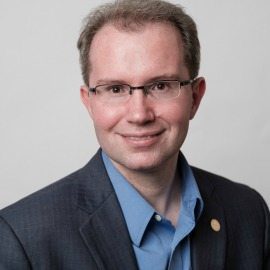
When Dr. David Bray left federal government service, his role as a new father was the major factor in the decision.
“The summer of 2017 was a period of a lot of change for my wife and I,” Bray said. “A newborn baby boy entered our lives and at the same time, Vint Cerf extended the offer for me to join the People-Centered Internet coalition as their new executive director.”
PCI seeks to provide support for two essential complementary movements: first, to empower people through the internet and second, to help transform social institutions using the internet constructively for the better by working with businesses, civil society organizations, and innovators around the world.
PCI founder and chairman Vint Cerf, known as one of the “Fathers of the Internet,” and co-founder Mei Lin Fung, who co-designed the earliest CRM system at Oracle, were responsible for successfully courting Bray away from federal government to become PCI’s executive director in 2017.
Half the world’s population still lacks internet connectivity, and part of the mission of PCI is to remedy that situation, especially for rural and austere areas. With the accelerating pace of disruptive technologies impacting societies, there is a potential for the internet to be used in new ways for purposes that either aid people or that harm them, Bray said.
PCI seeks to form partnerships around the world to help individuals make informed choices how to use the internet to improve people’s lives, including empowering people to have a greater locus of choice about data and information they produce and opt to share, he said.
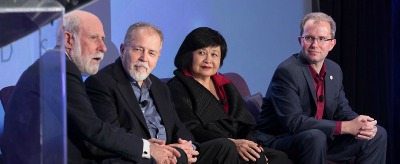
With the arrival of the newborn baby boy, Bray’s work has become even more personal as he considers the impact new and disruptive technologies will have on communities, societies, and the world over the next 20 years.
“It underscores the importance of a people-centered internet,” Bray said. “We run the risk if we don’t make a concerted effort now toward a more positive internet, future generations — including my son — may not look back at the internet with as much hope as we originally did in the 1990s and early 2000s.”
Bray’s more than 20-year career began when personal computers and later the internet were just beginning to become commercially available. In the early 1980s, Bray’s grandfather bought each of the grandchildren an IBM PC.
“At the time, it had a whopping 64 kilobytes of RAM and a 16-color display,” Bray said. “That got me involved very early on with computers. I took it apart and put it back together. I started to teach myself how to code.”
By 15, his competitions in science fairs in Virginia had grabbed the attention of potential employers. He was offered a job with the Energy Department working with quarks and neutrinos, requiring him to obtain a parent-approved work permit because of his age.
Later, he worked with the soil conservation movement at the Agriculture Department, where he helped monitor civil conservation and crop growth. In 1995, the Institute for Defense Analyses approached him to work on a project in which satellites in space were used to identify and predict the paths of forest fires. Then, between 1998 and 2000, while still in college, he provided internet strategy to two Fortune 500 companies.
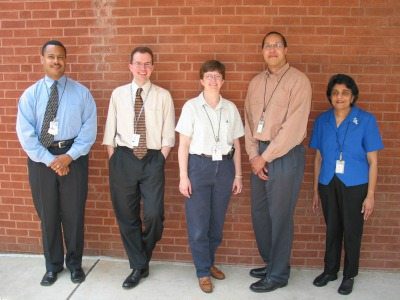
In 2000, Bray signed up with Bioterrorism Preparedness and Response Program at the Centers for Disease Control and Prevention, where he was the only person in his group with a background in both biology and IT. He was scheduled to deliver a briefing on Sept. 11, 2001. That briefing was cancelled as CDC mobilized to respond to the tragic events of 9/11, and Bray gave the briefing right before the anthrax events of October 2001.
Bray led the tech effort in creating a nationwide laboratory response network for bioterrorism response.
“If you get a suspicious letter or package, a public official anywhere can take it to the nearest member lab,” he said. “There’s a series of standardized testing protocols to get you to a presumptive and then a confirmatory positive or negative.”
Another time when he felt his work made a profound difference was in 2009 when he volunteered to go to Afghanistan for the Defense Department analyses with the assignment of identifying military and humanitarian problems no one knew were problems before they became problems.
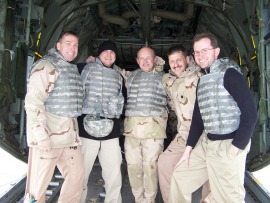
“I was fortunate to meet some graduates from the School of Advanced Military Students and together we asked a lot of questions about why certain efforts were being done, were they really helping, and were situations on the ground really improving,” Bray said. “Some of those questions led to changes for the better.”
For his work, he later received DOD’s Joint Civilian Service Commendation Award.
Between 2005 and 2008, Bray pursued a Ph.D. focused on how to improve organizational response to disruptive events, including how to best link people to technology assets. He was a visiting associate at the University of Oxford and later completed two post-doctoral associateships at MIT and Harvard focused on leadership in a networked world. He also provided strategy to an internet health care startup.
From 2008 to 2010, Bray was a member of the Institute for Defense Analyses and the Science and Technology Policy Institute. He then joined the national security community in 2010 as a senior executive, later serving as executive director for the first-ever bipartisan National Commission reviewing R&D efforts of the entire U.S. intelligence community. In 2013 he received both the National Intelligence Exceptional Achievement Medal and the Roger W. Jones Award for Executive Leadership.
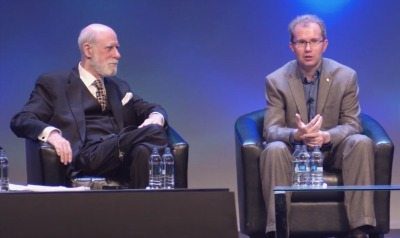
Bray’s most recent role before his current PCI position had been at the Federal Communications Commission starting in 2013, where he was the ninth chief information officer in eight years. He led a successful 4-year stint in which he led the replacement of the commission’s aging systems and moved operations to the cloud-based operations that achieved results in half the time and at one-sixth the cost in resource constrained environments.
During his tenure, Bray received the Armed Forces Communications and Electronic Association’s Outstanding Achievement Award in 2015 and the global CIO 100 Award twice. These efforts were the vanguard of current efforts aimed at modernization across the federal government as a whole.
“It’s too bad that IT systems don’t emit the smell of old cheese once they pass their expiration date,” Bray said. “If they did, that would make the job of modernizing easier because everyone would see the need. As it is, you must build a compelling business case for why they need to be replaced before something visibly breaks, especially when budgets are tight.”
“In 2013, I told my wife when I joined the commission that a lot of things could go wrong with modernizing legacy IT, especially given some of the more controversial topics the FCC sometimes addresses,” Bray continued. “I joined as a nonpartisan exec, which meant my focus was solely on being a champion of positive ‘change agents.’ This meant the team and I had to (work) closely with folks heavily accustomed to using the legacy systems we sought to modernize. This required empathy toward others, since we were figuratively ‘moving the cheese’ away from what several stakeholders were used to using in the past.”
“New can be foreign and present new learning curves,” Bray added. “Sometimes, that means dissension will be thrown your way and you have to press on with a smile. For any transformational effort, building the positive momentum required for organizational change takes a lot of energy — fortunately, there were several great change agents working together at the commission.”
Now, in addition to his involvement with PCI, Bray serves as a chief strategy officer for a company working with big data and geospatial analytics. He also serves on the board of directors for two transformational ventures. Lastly, he is a guest lecturer and speaker with both Harvard and Singular universities.
Bray has shifted between public and private sector work many times in his career. When asked what motivates him, Bray’s response was: “Choose your work assignments based on ‘Has it never been done before? Is it an important undertaking, despite the odds and pressures? If so, I’m interested — I like near-impossible missions that require working with teams in ambiguous and sometimes turbulent environments.”
In 2016, he was named one of Business Insider’s “24 Americans Who Are Changing the World” under 40. Bray holds a doctorate degree from Emory’s Goizueta Business School and a master of science in public health informatics, as well as an undergraduate in computer science and biology. In his free time, he enjoys hiking with his wife and volunteering, including past work with Habitat for Humanity International in the Philippines, Honduras, Romania, Nepal, Ghana, South Korea and Kyrgyzstan.
Bray recently read “The Player of Games” by Ian M. Banks, a fictional account that doubles as modern philosophy on the merits of top-down versus bottom-up societies. He currently is reading “Surely You’re Joking, Mr. Feynman,” the autobiography of noted physicist Richard Feynman.
Moving forward in his new executive director role, Bray has a clear idea of what he wants to do with the rest of his professional life.
“We are in a period of massive change,” he said. “Global changes are challenging individuals, organizations, and societies to adapt and make sense of the new world ahead. When I eventually retire, I hope to have played a role in encouraging helpful conversations to address issues that span sectors — doing what good I could, wherever and whenever circumstances needed.”


1 Comment
dr. bray led the way in championing positive change agents, great to see him continuing to do so with the people centered internet as well